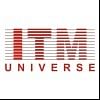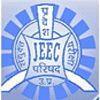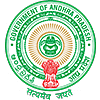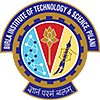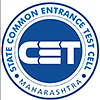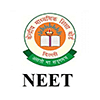Table of Contents
AMUEEE 2024 syllabus mainly consists of Physics, Chemistry, and Mathematics. To prepare efficiently, candidates are advised to study according to the syllabus prescribed for AMUEE 2024. For a better understanding of the syllabus of the AMUEEE 2024 exam, candidates can check previous year's AMU entrance exam sample papers. The important topics for the exam syllabus are below.
AMUEEE 2024 Syllabus for Physics
The topics for Physics in the AMUEEE 2024 exam are listed below.
- Physical World and Measurement
- Kinematics
- Laws of Motion
- Work, Energy, and Power
- The motion of the System of Particles and Rigid Body
- Gravitation
- Properties of Bulk Matter
- Thermodynamics
- The behaviour of Perfect Gas and Kinetic Theory
- Oscillations and Waves
- Electrostatics
- Current Electricity
- Magnetic Effects of Current and Magnetism
- Electromagnetic Induction and Alternating Currents
- Electromagnetic Waves
- Optics
- Dual Nature of Matter and Radiation
- Atoms & Nuclei
- Electronic Devices
- Communication Systems
AMUEEE 2024 Syllabus for Chemistry
Topics in Chemistry for AMUEEE 2024 are given below.
- Some Basic Concepts of Chemistry
- Structure of Atom
- Classification of Elements and Periodicity in Properties
- Chemical Bonding and Molecular Structure
- States of Matter: Gases and Liquids
- Thermodynamics
- Equilibrium
- Hydrogen
- s-Block Elements (Alkali and Alkaline earth metals)
- Some p-Block Elements
- Organic Chemistry – Some Basic Principles and Techniques
- Hydrocarbons
- Environmental Chemistry
- Solid State
- Solutions
- Electrochemistry
- Chemical Kinetics
- Surface Chemistry
- General Principles and Processes of Isolation of Elements
- Block Elements: Group 16 elements, Group 17 elements, Group 18 elements
- D and f Block Elements: Lanthanoids, Actinoids
- Coordination Compounds
- Haloalkanes and Haloarenes
- Alcohols, Phenols, and Ethers
- Aldehydes, Ketones and Carboxylic Acids
- Organic Compounds Containing Nitrogen -amines, Cyanides, and Isocyanides, Diazonium Salts.
- Biomolecules -Carbohydrates, Proteins, Hormones, Vitamins, Nucleic Acids
- Polymers
- Chemistry in Everyday Life
AMUEEE 2024 Syllabus for Mathematics
The various topics in Mathematics for AMUEEE 2024 are given below.
- Sets And Functions
- Sets
- Relations & Functions
- Trigonometric Functions
- Algebra
- Principle Of Mathematical Induction
- Complex Numbers And Quadratic Equations
- Linear Inequalities
- Permutations And Combinations
- Binomial Theorem
- Sequence And Series
- Coordinate Geometry
- Straight Lines
- Conic Section
- Introduction To Three Dimensional Geometry
- Calculus
- Limits And Derivatives
- Mathematical Reasoning
- Mathematical Reasoning
- Probability
AMUEEE 2024 Detailed Syllabus for Physics
The detailed exam syllabus for Physics in AMUEEE 2024 is below.
Physical World and Measurement
Physics: scope and excitement, nature of physical laws, physics, technology, and society. Need for measurement: units of measurement, systems of units, SI units, fundamental and derived units. Length, mass, and time measurements; accuracy and precision of measuring instruments; Errors in measurement; significant figures. Dimensions of physical quantities, dimensional analysis, and its applications.
Kinematics
The frame of reference. Motion in a straight line: Position-time graph, speed, and velocity. Uniform and non-uniform motion, average speed, and instantaneous velocity. Uniformly accelerated motion, velocity-time, position-time graphs, and relations for uniformly accelerated motion (graphical treatment). Elementary concepts of differentiation and integration for describing motion. Scalar and vector quantities: Position and displacement vectors, general vectors and notation, equality of vectors, multiplication of vectors by a real number; addition and subtraction of vectors. Relative velocity. Unit vector; Resolution of a vector in plane-rectangular components. Motion in a plane. Cases of uniform velocity and uniform acceleration projectile motion. Uniform circular motion.
Laws of Motion
Intuitive concepts of force. Inertia, Newton’s first law of motion; momentum and Newton’s second law of motion; impulse; Newton’s third law of motion. Law of conservation of linear momentum and its applications. Equilibrium of concurrent forces. Static and kinetic friction, laws of friction, rolling friction. Lubrication, Dynamics of uniform circular motion: Centripetal force, examples of circular motion (vehicle on level circular road, vehicle on banked road).
Work, Energy and Power
Scalar product of vectors. Work is done by a constant force and a variable force; kinetic energy, work-energy theorem, and power. The notion of potential energy, the potential energy of a spring, conservative forces: conservation of mechanical energy (kinetic and potential energies); non-conservative forces: elastic and inelastic collisions in one and two dimensions.
Motion of System of Particles and Rigid Body
Centre of the mass of a two-particle system, momentum conversation, and centre of mass motion. Centre of mass of a rigid body; the centre of mass of the uniform rod. Vector product of vectors; a moment of a force, torque, angular momentum, conservation of angular momentum with some examples. Equilibrium of rigid bodies, rigid body rotation, and equations of rotational motion. Comparison of linear and rotational motions; the moment of inertia, the radius of gyration. Values of moments of inertia for simple geometrical objects (no derivation). Statement of parallel and perpendicular axes theorems and their applications.
Gravitation
Kepler's laws of planetary motion. The universal law of gravitation. Acceleration is due to gravity and its variation with altitude and depth. Gravitational potential energy; gravitational potential. Escape velocity. Orbital velocity of a satellite. Geostationary satellites.
Properties of Bulk Matter
Elastic behaviour, Stress-strain relationship, Hooke’s law, Young’s modulus, bulk modulus, shear, modulus of rigidity. Pressure due to a fluid column; Pascal’s law and its applications (hydraulic lift and hydraulic brakes). Effect of gravity on fluid pressure. Viscosity, Stokes’ law, terminal velocity, streamline, and turbulent flow. Bernoulli’s theorem and its applications. Surface energy and surface tension, angle of contact, application of surface tension ideas to drops, bubbles, and capillary rise. Heat, temperature, thermal expansion; change of state-latent heat. Heat transfer-conduction, convection, and radiation, thermal conductivity.
Thermodynamics
Thermal equilibrium and definition of temperature (zeroth law of thermodynamics). Heat, work and internal energy. The first law of thermodynamics. Isothermal & adiabatic process. The second law of thermodynamics: reversible and irreversible processes. Heat engines and refrigerators.
Behavior of Perfect Gas and Kinetic Theory
Equation of state of a perfect gas, work done on compressing a gas. Kinetic theory of gases-assumptions, the concept of pressure. Kinetic Interpretation of temperature; rms speed of gas molecules; degrees of freedom, the law of equipartition of energy (statement only) and application to specific heats of gases; the concept of mean free path, Avogadro’s number.
Oscillations and Waves
Periodic motion-period, frequency, displacement as a function of time. Periodic functions. Simple harmonic motion (S.H.M) and its equation; oscillations of a spring-restoring force and force constant; energy in S.H.M.-Kinetic and potential energies; simple pendulum-derivation of expression for its time period; free, forced, and damped oscillations (qualitative ideas only), resonance. Wave motion. Longitudinal and transverse waves, speed of wave motion. Displacement relation for a progressive wave. Principle of superposition of waves, the reflection of waves, standing waves in strings and organ pipes, fundamental mode and harmonics, Beats, Doppler effect.
Electrostatics
Electric charges, Conservation of charge, Coulomb’s low force between two-point charges, forces between multiple charges, superposition principle, and continuous charge distribution. Electric field, electric field due to a point charge, electric field lines; electric dipole electric field due to a dipole torque on a dipole in a uniform electric field. Electric flux, statement of Gauss's theorem and its applications to find a field due to an infinitely long straight wire uniformly charged infinite plane sheet and uniformly charged thin spherical shell (field inside and outside). Electric potential, potential difference, electric potential due to a point charge, a dipole and system of charge; equipotential surfaces, electrical potential energy of a system of two point charges and electric dipole in an electrostatic field. Conductors and insulators, free charges, and bound charges inside a conductor. Dielectrics and electric polarization, capacitors and capacitance, the combination of capacitors in series and in parallel, the capacitance of a parallel plate capacitor with and without dielectric medium between the plates, and energy stored in a capacitor.
Current Electricity
The electric current flow of electric charges in a metallic conductor drift velocity, mobility and their relation with electric current; Ohm’s Law electrical resistance, V-I characteristics (linear and non-linear), electrical energy and power, electrical resistivity and conductivity. Carbon resistors color code for carbon resistors; series and parallel combinations of resistors; temperature dependence of resistance. The internal resistance of a cell, potential difference, and emf of a cell combination of cells in series and parallel. Kirchhoff’s laws and simple applications. Wheatstone bridge and meter bridge. Potentiometer – principle and its applications to measure potential difference and for comparing emf of two cells; measurement of internal resistance of a cell.
Magnetic Effects of Current and Magnetism
Concept of the magnetic field, Oersted’s experiment. Biot-Savart law and its application to the current carrying circular loop. Ampere’s law and its applications to infinitely long straight wire, straight and toroidal solenoids. Force on a moving charge in uniform magnetic and electric fields. Cyclotron. Force on a current–carrying conductor in a uniform magnetic field. The force between two parallel current–carrying conductors – definition of ampere. Torque experienced by a current loop in a uniform magnetic field; moving coil galvanometer – its current sensitivity and conversion to ammeter and voltmeter. Current loop as a magnetic dipole and its magnetic dipole moment. Magnetic dipole, the moment of a revolving electron, magnetic field intensity due to a magnetic dipole (bar magnet) along its axis and perpendicular to its axis. Torque on a magnetic dipole (bar magnet) in a uniform magnetic field; bar magnet as an equivalent solenoid magnetic field line; Earth’s magnetic field and magnetic elements para – dia – and ferromagnetic substances, with examples. Electromagnets and factors affecting their strengths. Permanent magnets.
Electromagnetic Induction and Alternating Currents
Electromagnetic Induction; Faraday’s law. Induced emf and current; Lenz’s law, Eddy's current self, and mutual induction. Alternating currents, peak and rms value of alternating; current/voltage, reactance, and impedance; LC oscillations (qualitative treatment only), LCR series circuit, resonance; power in AC circuits wattles current. AC generator and transformer.
Electromagnetic Waves
Displacement current, Electromagnetic wave and their characteristics (qualitative ideas only) Transverse nature of electromagnetic waves. The electromagnetic spectrum (radio waves, microwaves, infrared, visible, ultraviolet, X-rays, gamma rays) includes elementary facts about their uses.
Optics
Reflection of light spherical mirrors, mirror formula refraction of light, total internal reflection and its applications, optical fibres refraction at spherical surfaces, lenses thin lens formula lens maker’s Formula. The magnification power of a lens, a combination of thin lenses in a contract. Refraction and dispersion of light through a prism. Scattering of light – the blue colour of the sky and the reddish appearance of the sun at sunrise and sunset. Optical instruments: Microscopes and astronomical telescopes (reflecting and refraction) and their magnifying powers. Waves optics: Wavefront and Huygens principle reflection and refraction of plane wave at a plane surface using wave fronts. Proof of laws of reflection and refraction using Huygens principle. Interference, Young’s double-slit experiment and expression for fringe width coherent sources and sustained interference of light. Diffraction due to a single slit, width of central maximum. Resolving power of microscopes and astronomical telescopes Polarization, plane-polarized light; Brewster’s law. Uses of plane-polarized light and Polaroids.
Dual Nature of Matter and Radiation
Dual nature of Radiation Photoelectric, Hertz and Lenard’s observations; Einstein’s Photoelectric equation – particle nature of light. Matter waves-wave nature of particles, de Broglie relation. Davisson – Germer experiment.
Atoms & Nuclei
Alpha-particle scattering experiment, Rutherford’s model of atom; Bohr model, energy levels hydrogen spectrum. Composition and size of nucleus, Radioactivity-alpha, beta and gamma particles/rays, and their properties; radioactive decay law Mass-energy relation, mass defect; binding energy per nucleon and its variation with mass number; nuclear fission, nuclear fusion.
Electronic Devices
Semiconductors; semiconductor diode – I – V. characteristics in forward and reverse bias, diode as a rectifier; IV characteristics of LED, photodiode, solar cell, and Zener diode: Zener diode as a voltage regulator. Junction transistor, transistor action characteristics of a transistor; transistor as an amplifier (common emitter configuration). Logic gates (OR, AND, NOT, NAND and NOR).
Communication Systems
Elements of a communication system (block diagram only); bandwidth of signals (speech, TV, and digital data); bandwidth of transmission medium. Propagation of electromagnetic waves in the atmosphere, sky, and space wave propagation. Need for modulation.
AMUEEE 2024 Detailed Syllabus for Chemistry
The detailed exam syllabus for Chemistry in AMUEEE 2024 is below.
Some Basic Concepts in Chemistry
Importance of Chemistry, physical quantities and their measurement in Chemistry, SI Units, uncertainty in measurements and use of significant figures, Unit and dimensional analysis, Matter and its nature, laws of chemical combinations, atomic and molecular, masses mole concept, molar masses, percentage composition, and molecular formula, chemical stoichiometry.
States of Matter
Three states of matter, gaseous state, gas laws (Boyle's Law and Charles Law), Avogadro's Law, Grahams'Law of diffusion, Dalton's law of partial pressure, ideal gas equation, Kinetic theory of gases, real gases and deviation from ideal behavior, van der Waals’ equation, liquefaction of gases and critical points, Intermolecular forces; liquids and solids.
Atomic Structure
Earlier atomic models (Thomson's and Rutherford), the emission spectrum of the hydrogen atom, Bohr's model, of the hydrogen atom, Limitations of Bohr’s model, dual nature of matter and radiation, Heisenberg uncertainty principle, quantum mechanical model of the atom (quantum designation of atomic orbitals and electron energy in terms of principal, angular momentum and magnetic quantum numbers), electronic spin and spin quantum numbers, Pauli’s exclusion principle, the general idea of screening (constants) of outer electrons by inner electrons in an atom, Aufbau principle, Hund's rule, atomic orbitals and their pictorial representation, electronic configurations of elements.
Classification of Elements and Periodicity in Properties
Need and genesis of classification of elements (from Doebereiner to Mendeleev), Modern periodic law and present form of the periodic table, Nomenclature of elements with atomic number > 100, electronic configurations of elements and the periodic table, electronic configuration and types of elements and s, p, d and f blocks, periodic trends in properties of elements (atomic size, ionization enthalpy, electron gain enthalpy, valence/ oxidation states, and chemical reactivity).
Chemical Energetics
Some basic concepts in thermodynamics, the first law of thermodynamics, heat capacity, measurement of DU and DH, calorimetry, standard enthalpy changes, thermochemical equations, enthalpy changes during phase transformations, Hess's Law, standard enthalpies of formation, bond enthalpies and calculations based on them.
Chemical Bonding
Kossel -Lewis approach to chemical bond formation, ionic bonds, covalent bonds, polarity of bonds and concept of electronegativity, valence shell electron pair repulsion (VSEPR) theory, shapes of simple molecules, valence bond theory, hybridization involving s, p, and d orbitals and shapes of molecules s and p bonds; Molecular orbital theory involving homonuclear diatomic molecules; Hydrogen-bonding.
Equilibrium
- Equilibrium in physical and chemical processes
- Equilibrium in physical and chemical processes, dynamic equilibrium, the law of chemical equilibrium and equilibrium constant, homogeneous equilibrium, heterogeneous equilibrium, application of equilibrium constants, Relationship between reaction quotient Q, equilibrium constant, K and Gibbs’ energy G; factors affecting equilibrium-Le Chateliar's principle.
- Ionic equilibrium
- Acids, Bases, and Salts and their ionization, weak and strong electrolytes degree of ionization and ionization constants, the concept of pH, ionic product of water, buffer solution, common ion effect, the solubility of sparingly soluble salts, and solubility products.
Redox Reactions
Electronic concepts of reduction-oxidation, redox reactions, oxidation number, and balancing of redox reactions.
Solid-state Chemistry
Classification of solids based on different binding forces: molecular, ionic, covalent, and metallic solids, amorphous and crystalline solids; unit cells in two dimensional and three-dimensional lattices, calculation of density of a unit cell, packing in solids, voids, number of atoms per unit cell in a cubic unit cell, point defects, electrical and magnetic properties.
Chemical Thermodynamics
Spontaneous processes, energy and spontaneity, entropy, and the second law of thermodynamics, the concept of absolute entropy, Gibbs energy and spontaneity, Gibbs energy change and equilibrium constant.
Solutions
Types of solutions, different units for expressing the concentration of the solution, mole fraction, percentage (by volume and mass both), definitions of dilute solutions, the vapor pressure of solutions and Raoult's Law, Colligative properties, lowering of vapor pressure, depression of freezing point, the elevation of boiling points and osmotic pressure, determination of molecular masses using colligative properties, abnormal values of molecular masses, Vant Hoff factor. Simple numerical problems.
Chemical Kinetics
Rate of chemical reactions, factors, affecting rates of reactions –concentration, temperature and catalyst, order and molecularity of reactions, rate law and rate constant, differential and integral forms of first-order reaction, half-life (only zero and first-order) characteristics of first-order reaction, the effect of temperature on reactions, Arrhenius theory - activation energy, collision theory of reaction rate (no derivation).
Electrochemistry
Conductance in electrolytic solutions, specific and molar conductivity, variation of conductivity with concentration, Kohlrausch's law, electrolysis and laws of electrolysis (elementary idea), electrolytic and galvanic cells, emf. of a cell, standard electrode potential, Nernst equation, concentration cell, fuel cells, cell potential and Gibbs energy, dry cell and lead accumulator.
Surface Chemistry
Adsorption - physisorption and chemisorption, factors affecting adsorption of gases on solids, catalysis, homogeneous and heterogeneous activity, and selectivity, enzyme catalysis, colloidal state, the distinction between true solutions, colloids, and suspensions; lyophilic, lyophobic, multimolecular and macromolecular colloids, properties of colloids, Tyndal effect, Brownian movement, electrophoresis, coagulation, emulsions - a type of emulsions.
Hydrogen
The position of hydrogen in the periodic table, isotopes of hydrogen, heavy water, hydrogen peroxide-preparation, reactions and structures; hydrides and their classification.
s-Block Elements (Alkali and Alkaline Earth Metals)
Group 1 and Group 2 elements: Electronic configurations and general trends in physical and chemical properties, anomalous properties of the first element of each group, diagonal relationship.Preparation and properties of some important compounds, sodium carbonate, sodium hydroxide, sodium hydrogen carbonate, and industrial uses of lime and limestone, the biological significance of Na, K, Mg and Ca.
General Principles and Processes of Isolation of Elements
Principles and methods of extraction - concentration, reduction, (chemical and electrolytic methods), and refining. Occurrence and principles of extraction of Al, Cu, Zn, and Fe.
p-Block Elements
Introduction to p-block elements: Electronic configurations and general trends in properties, viz. atomic sizes, ionization enthalpies, electronegativity values, electron gain enthalpies, and oxidation states across the periods and down the groups in the p-block.
The unique behavior of the top element in each group of the block - the covalency limit and the pp - pp overlap in some molecules (e.g. N2, O2) and its consequences; general trend in catenation tendency down each group.
Group-wise study of the p-block Elements
- Group 13 - In addition to the general characteristics as outlined above, properties and uses of aluminum, nature of hydrides/ halides and oxides; Properties, structures, and uses of diborane boron halides, aluminum chloride, borax, boric acid, and alums.
- Group 14 - In addition to the general characteristics; carbon – catenation, allotropic forms (diamond and graphite), properties and structures of oxides; silicon-silicon tetrachloride, and structures and uses of silicates, silicones, and zeolites.
- Group 15 - In addition to the general characteristics, the general trends in the nature and structures of hydrides, halides, and oxides of these elements. Preparation and properties of ammonia, nitric acid, phosphine, and halides of phosphorus, structures of the oxoacids of phosphorus.
- Group 16 - In addition to the general characteristics, preparations, properties, and uses of dioxygen, simple oxides, ozone; sulphur - allotropic forms, compounds of sulphur, preparation, properties, and uses of sulphur dioxide and sulphuric acid, industrial preparations of sulphuric acid, structures of oxoacids of sulphur.
- Group 17 - In addition to the general characteristics, occurrence, trends in physical and chemical properties, oxides and oxoacids of halogens (structures only), preparation, properties, and uses of chlorine and hydrochloric acid, and trends in the acidic nature of hydrogen halides. Interhalogen compounds (structures only).
- Group 18 - General introduction, electronic configurations, occurrence, trends in physical and chemical properties and uses, - fluorides and oxides of xenon (structures only).
d-and f-Block Elements
General introduction, electronic configuration, occurrence and characteristics of transition metals, general trends in properties of the first-row transition metals –physical properties, ionization enthalpy, oxidation states, ionic radii, colour, catalytic property, magnetic property, interstitial compounds, alloy formation; preparations and properties of K2Cr2O7 and KMnO4.
Lanthanoids: Electronic configuration and oxidation states, chemical reactivity, and lanthanoid contraction.
Actinoids: Electronic configuration and oxidation states.
Coordination Compounds
Introduction to ligands, coordination number, color, magnetic properties, and shapes; IUPAC - nomenclature of mononuclear coordination compounds, isomerism, bonding-valence bond approach to the bonding and basic ideas of Crystal Field Theory, color, and magnetic properties. Elementary ideas of metal-carbon bonds and organometallic compounds, the importance of coordination compounds (in qualitative analysis, extraction of metals, and biological systems).
Some Basic Principles of Organic Chemistry
Tetravalence of carbon, hybridization ( s and p ), shapes of simple molecules, functional groups:-C=C-, -CC- and those containing halogens, oxygen, nitrogen, and sulphur; homologous series, isomerism.
General introduction to naming organic compounds-trivial names and IUPAC.
- Electronic displacement in a covalent bond; inductive effect, electromeric effect, resonance, and hyperconjugation. Fission of covalent bond: free radicals, electrophiles and nucleophiles, carbocations, and carbanions.
- Common types of organic reactions: substitution, addition, elimination, and rearrangement reactions.
Hydrocarbons
Alkanes and cycloalkanes: classification of hydrocarbons, alkanes, and cycloalkanes, nomenclature and conformations of alkanes and cycloalkanes.
Alkenes and alkynes: Nomenclature and isomerism, general methods of preparation, properties (physical and chemical), mechanism of electrophilic addition, Markownikoff’s rule, peroxide effect, acidic character of alkynes, polymerization reactions.
Aromatic hydrocarbons: Benzene and its homologues, nomenclature, sources of aromatic hydrocarbons (coal and petroleum), the structure of benzene, the chemical reaction of benzene-mechanism of electrophilic substitution. Directive influence of substituents and their effect on reactivity.
Petroleum and petrochemicals: Composition of crude oil fractionation and uses, quality of gasoline, LPG, CNG, cracking and reforming, petrochemicals.
Purification and Characterization of Carbon Compounds
- Purification of carbon compounds: filtration, crystallization, sublimation, distillation chromatography,
- Qualitative analysis: Detection of nitrogen, sulphur, phosphorus, and halogens.
- Quantitative analysis: estimation of different elements (H, N, halogens, S, and P)
- Determination of molecular masses: Silver salt method, chloroplatinate salt method, calculations of empirical and molecular formulas.
Organic Compounds With Functional Groups Containing Halogens (X)
- Nature of C-X bond in haloalkanes and haloarenes, nomenclature, physical and chemical properties, mechanism of substitution reactions, the reactivity of C-X bond in haloalkanes, and haloarenes.
- Some commercially important compounds: are dichloro, trichloro, and tetrachloromethane; p-dichlorobenzene, freons, BHC, DDT, their uses, and important reactions.
Organic Compounds With Functional Groups Containing Oxygen
- Alcohols and phenols: Nomenclature, methods of preparation, physical and chemical properties; chemical reactivity of phenols in electrophilic substitutions, acidic nature of phenol, ethers: electronic structure, the structure of the functional group, nomenclature, important methods of preparation, physical and chemical properties, some commercially important compounds.
- Aldehydes and ketones: Electronic structure of carbonyl group, nomenclature, important methods of preparation, physical properties and chemical reactions, relative reactivity of aldehydic and ketonic groups, the acidity of a-hydrogen, aldol condensation. Cannizzaro reaction, nucleophilic addition reaction to >C=O groups.
- Carboxylic acids: Electronic structure of-COOH, Nomenclature, important methods of preparation, physical properties and effect of substituents on a-carbon on acid strength, chemical reactions.
- Derivatives of carboxylic acids: Electronic structure of acid chloride, acid anhydride, ester and amide groups, nomenclature, important methods of preparation, comparative reactivity of acid derivatives. Some commercially important compounds.
Organic Compounds With a Functional Group Containing Nitrogen
- Structure, the nomenclature of nitro, amino, cyano, and diazo compounds.
- Nitro compounds – important methods of preparation, physical properties, and chemical reactions.
- Amines: primary, secondary, and tertiary amines, a general awareness, important methods of preparation, physical properties, basic character of amines, and chemical reactions.
- Cyanides and isocyanides: preparation, physical properties, and chemical reactions.
- Diazonium salts: Preparation, chemical reaction, and uses of benzene diazonium chloride. Some commercially important nitrogen-containing carbon compounds, (aniline, TNT)
Polymers
Classification of polymers, general methods of polymerization-addition and condensation: addition-free radical, cationic, anionic polymerization, copolymerization, natural rubber, vulcanization of rubber, synthetic rubbers, condensation polymers, the idea of macromolecules, biodegradable polymers. Some commercially important polymers (PVC, Teflon, polystyrene, nylon-6 and 66, terylene, and bakelite).
Environmental Chemistry
Environmental pollution – air, water, and soil pollution, chemical reactions in the atmosphere, smogs, major atmospheric pollutants, acid rain, ozone and its reactions, effects of depletion of the ozone layer, greenhouse effect, and global warming – pollution due to industrial wastes, green chemistry as an alternative tool for reducing pollution, strategy for controlling environmental pollution.
Biomolecules
- Carbohydrates: Classification, aldose, and ketose, monosaccharides (glucose and fructose), oligosaccharides (sucrose, lactose, maltose), polysaccharides (starch, cellulose, glycogen); important simple chemical reactions of glucose, elementary idea of the structure of pentose and hexose.
- Proteins: Elementary idea of a-amino acids, peptide bond, polypeptides, proteins; primary, the secondary, and tertiary structure of proteins and quaternary structure (qualitative idea only), denaturation of proteins, enzymes.
- Vitamins: Classification and functions
- Nucleic acids: Chemical composition of DNA and RNA
- Lipids: Classification and structure
- Hormones: Classification and functions in the biosystem.
Chemistry in Everyday Life
- Chemicals in medicines – analgesics, tranquilizers, antiseptics, disinfectants, antimicrobials, antifertility drugs, antacids, anti-histamines.
- Chemicals in food: Preservatives, artificial sweetening agents.
- Cleansing agents – soaps and detergents, cleansing action.
- Rocket Propellants: Characteristics and chemicals used.
FAQs on AMUEEE Syllabus
Q: What is the syllabus for AMUEEE?
Q: Is AMUEEE tougher than JEE?
Q: What is the best way to prepare for the AMUEEE syllabus?
Q: Which topics are important in AMUEEE?
Q: Are there any changes in the AMUEEE syllabus?





